Temperanillo: A Spanish Grape Fit for a Queen
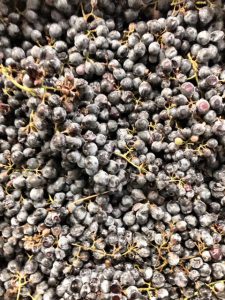
Temperanillo is an incredibly fruity and juicy varietal of wine grape that dates back over 2000 years in Spain. It is the most widely planted varietal in Spain, and the third most widely planted in the entire world (as of 2015). It is one of the oldest genetically traceable grapes in Spain and has been called the Noble Grape of Spain. Its grapes were often used in wine production for the noble class of the country, as well as for religious purposes. The conquistadores brought the grape to South America in their travels, further popularizing the varietal. While the name Temperanillo may sound unfamiliar to some winemakers, it is the primary grape in Rioja blends, a name often more popular to the consumer.
Temperanillo is famous for its direct and lush strawberry flavors. It has a bit higher level of acidity, really bringing out the bright strawberry and plum flavors. The grape has a thicker blue-black skin with a colorless interior. Limited skin contact at crush can generate a nice rosé, embracing the acidity and berry flavors of the wine. Prolonged skin contact throughout fermentation will generate the traditional, full bodied red. Temperanillo can stand as a full-bodied, fruity red on its own or can work well with other varietals in blends. To create a traditional Rioja blend, Temperanillo should be the largest percentage of the blend, coupled with varietals such as Grenache, Carignane, Merlot, or Cabernet Sauvignon. The wines can either be blended at crush or post fermentation, the latter giving the winemaker more finite control over the blend. Using yeast strains CLOS or VRB, which are isolated from ancient Spanish wineries, will help to enhance the overall structure and mouthfeel of the wine, helping the winemaker to recreate a traditional Rioja blend. The VRB yeast specifically, will also help to promote those lush fruit forward characteristics that the varietal is known for. The use of Opti-Red and Booster Rouge as supplemental yeast nutrients will help to secure color and tannic structure. Oak may be supplemented at fermentation to help preserve the grape tannins and then also added later to add flavor during the wines’ maturation process. We always advise to use a complete nutrition program throughout fermentation, including the use of Go-Ferm, Fermaid O, and Fermaid K. This will help avoid any stuck fermentations and off aromas. Temperanillo, as most reds, will benefit from malolactic fermentation.
Temperanillo is a versatile, early ripening varietal with a long history of contributing to great wines. From its origin in Spain, to its travels and proliferation in the New World, its fruity legacy has carried on creating wines fit for royalty or for adventurous winemakers, like us.
Check out these Videos of our Tempranillo being Crushed & Pressed!
IMG_2640_Tempranillo Crush_Musto Wine Grape_Winemaking
IMG_2641_Tempranillo Press_Musto Wine Grape_Winemaking
by the Winemakers at Musto Wine Grape
Black Muscat: A Grape by Any Other Name
The oldest genetically traceable family of grapes is the Muscat family. Over the centuries, the grape has traveled around the world and transformed itself through many genetic mutations. One of the most well known genetic crosses of the original Muscat grape is the Black Muscat. Black Muscat is a cross of the Schiava Grossa and the Muscat of Alexandria. The grape has very large, plump berries, with white flesh and black skin. The grape has intense, sweet floral and candy-like flavors.
Black Muscat can be used for a very wide variety of wine making purposes. It can be pressed to produce a white juice, that has been used in famous dessert wine productions as well as left on the skins to produce a flavorful rose or red table wine. It is popularly used for table wine production in California, China, and Eastern Europe. Quady Winery in California has gained fame and many acclimations over their dessert wine, Elysium, produced from the Black Muscat grape. The intense florals and sweet fruit flavors that are found in the unprocessed grape, translate in the finished wine product. Big flavors of raspberry jam and candied citrus make the wine deliciously sweet with enough acidity to create a harmonious balance. Because the wine can be made in so many different styles, the winemaker has many choices to control the outcome of the final product. If creating a dessert style wine, beneficial yeast strains would be Vin 13 or R2 to promote the complex floral aromatics. If creating a rose or table wine, QA23 or 71B yeast strains will help to promote aromatics and to capture the ripe red fruit flavors. Skin contact time will be critical; a few hours on the skins will produce a flavorful rose and then full maceration/fermentation on the skins will create a fruit forward table wine.
Musto Wine Grape has had such wonderful results with this grape, that Frank Musto has planted his own fields of this varietal. The vines are coming up on their 20th birthday, generating large but complex fruit and excellent yields. Frank Musto’s Black Muscat has started being harvested and is arriving in Hartford currently. Brix levels are averaging in the mid 20’s with smooth acidity. We are looking forward to making a fruit forward rose this year with some of the fruit. It is exciting to create a new style of wine with such an ancient, treasured strain of grape.
by the Winemakers at Musto Wine Grape
Teroldego: Adding Old World Style to New World Wines
Teroldego is an ancient varietal from the northern mountains of Italy. Originating from Trentino, a mountainous region on the Austrian border, this incredibly dark skinned grape is the genetic parent of Lagrein and Syrah. The grape is a prolific grower, bearing heavy yields while maintaining quality. The thicker skin makes for a more stable grape on the vine and allows for a longer hang time, generating a higher Brix level and more complex phenolics. They often use pergolas to help control the vigor of the vine itself.
The thicker skin of the Teroldego grape lends tremendous tannin content to the finished wine. Upon vinification of the grape, flavors of baking spices, red fruits, and pine are generated. Hints of tar and leather come most directly from the grape skin. This grape will add a tannic punch to any blend and can help to add mouthfeel to a thinner red variety. Some yeasts that will help to amplify the fruit notes and mouthfeel of the Teroldego are D254 and D80. This grape can also help add color and can be integrated at crush in a varietal with color securing problems. While Teroldego can be drunk early, it really starts to shine after 5 years of aging. In the aging process, the tannins will link up and form longer chains that will be perceived as a smoother mouthfeel. If the consumer doesn’t mind a more aggressive, bold wine, it can be enjoyed early, a perfect accompaniment to grilled meats.
Teroldego is an ancient variety with a traditional, earthy old-world style. While we may not be able to travel to Italy to create an old-world style wine, we now can bring Italy to us, in the form of this beautiful grape.
Numbers collected on 9/14/18 –
Brix=24.2
pH=3.62
TA=4.26g/L
YAN=276.8
by the Winemakers at Musto Wine Grape
How to Add Body without Ever Hitting the Gym, meet the Lagrein grape…..
As winemakers, we have all had a red wine that feels a little thinner in the mouthfeel than we would care for. It may feel thin bodied and slightly flabby. How does a winemaker address this issue in their wine? Unlike people, we can’t send the weak bodied wine to the gym to bulk up, but we can introduce the wine to Lagrein. Lagrein is a red wine grape that originates from the northern valleys of Italy. It has been used to create very aromatic rosés and incredibly full bodied red wines. It has a higher level of acidity and a lower pH factor than many red wines, making it an excellent blending wine. When vinified on its own, Lagrein has a lot of intense, chewy tannins and flavors of plum, tobacco, and an earthy minerality.
When making a stand-alone Lagrein, (or to be used in a blend later), it is suggested that the winemaker may choose to have a limited maceration time for this grape variety. The important and prevalent grape tannins are hydrolysable and will be extracted into the must within the first few days of fermentation. The stronger, bitter seed tannins will be extracted in the accumulating ethanol later on in the fermentation, giving cause to the winemaker for an early pressing. BDX yeast strain will help to create a smoother and rounder mouthfeel, given its propensity for soft tannin extraction. Another excellent yeast for this varietal would be D80 as it will enhance palate volume, finer tannin sensation, and brings out the spicy flavors within the Lagrein grape. Fermentation aids such as Booster Rouge and Opti-Red will help to lock in the color and preserve the longer chain, smoother grape tannins with in the Lagrein grape. The winemaker can chose to add oak dust or fermentation tannins, but with the tannic intensity of the grape, it may not be as crucial as with other varietals. We always advise to use a complete nutrition program throughout fermentation, including the use of Go-Ferm, Fermaid O, and Fermaid K. This will help avoid any stuck fermentations and off aromas.
Due to its intense tannic structure, the Lagrein grape is an excellent grape to blend with other wines to help build up their tannin structure. The winemaker can chose to add in a small percentage at crush to naturally fortify their primary varietal with additional tannins or to ferment a batch of Lagrein separately and then blend into other wines, post fermentation to add to their structure or mouthfeel. With its bright acidic character and higher tannin content, it can greatly add the attributes to any red wine. Having a small amount of Lagrein wine in the winery, maybe the perfect finishing touch to some of your other wines. It can add such strong structure and body to a red wine blend, it can be a useful “secret ingredient” to fortify the body of red wines. Incorporating Lagrein, your wine will feel like it has “hit the gym” without ever having to leave the winery. If only it were that easy for the rest of us!
Ger-whaaaat? You may not be able to say Gewurztraminer, but here is why you should be making it.
Gewurztraminer is an aromatic German varietal that has been twisting tongues of wine enthusiasts for decades. Only in the past decade has Gewurztraminer been making a more consistent appearance on wine lists and in wine stores. With interest in not just sweet, but complex, sweeter wines trending amongst millennial drinkers, varietals like Gewurztraminer are seeing a surge in their popularity.
Gewurztraminer is a grape variety that is originally from the Alsatian region of France, on the German border. Its attractive pink to light red color of its skins was thought to be a genetic mutation of the Red Traminer grape of Germany and Northern Italy. Its name comes from the German “Gewurz”, which means “herb” or “spice”. When sipping Gewurztraminer, it is easy to see the development of its name, as the grape is famous for its floral, slightly herbal, and spicy aromas. Upon vinification, the grape often has large aromas of lychee, rose petal, white pepper, and passion fruit. The varietal is most well-known for its intense aroma. Even small amounts, when added to a blend, will greatly enhance complexity of the aroma.
When making your own Gewurztraminer, Musto Wine Grape imports Gewurztraminer from the Central Valley of CA. This premium grape growing region generates a ripe, bold example of Gewurztraminer. The grapes average around 24-26Brix upon arrival, with appropriate, refreshing acidity. We would suggest using Vin 13 or R2 yeast to enhance the varietal character and to help promote the fruity and floral aromas that the Gewurztraminer is known for. The addition of supplemental yeast nutrients such as Booster Blanc and Opti-White will help to preserve the intense aroma for long term enjoyment and a small addition of FT Blanc Soft can help to increase the mid-palate volume and intensity of flavor. We always advise to use a complete nutrition program throughout fermentation, including the use of Go-Ferm, Fermaid O, and Fermaid K. This will help avoid any stuck fermentations and off aromas. Gewurztraminer will not benefit from malolactic fermentation.
The intense perfume-like aromas and luscious tropical flavors found in Gewurztraminer make it an excellent pairing for spicy food such as Asian cuisine or Indian Curry. It is a refreshing patio sipper with such an astounding aroma, it is guaranteed to impress anyone who you may pour it for.
by the Winemakers at Musto Wine Grape
Musto Wine Grape Harvest Update – Brix Levels, Harvest Dates, and Delivery Dates
Hello Winemakers,
We have a lot to update you on. But first and foremost – Our first loads of grapes will start to arrive the week of September 10th. Think white wine grapes such as Pinot Grigio, Albarino, Viognier, Muscat, Thompson Seedless, Barbera, and a few other early red varieties. Our first load of juice should be arriving around September 6th with limited varieties.
We are seeing Brix numbers creep up in every AVA.
Lodi: Zinderella Zinfandel should be picked around September 8th. They are currently at 18 Brix.
Suisun Valley: We are at about 16-18 Brix depending on the variety.
Central Valley: We are anywhere from 17-22 Brix depending on the variety.
Paso Robles: Pinot Noir is around 18.5 Brix.
Contra Costa: Aglianico is around 18.2 Brix
Washington State: The Pinot Noir is around 20 Brix and the other varieties are still going through verasion.
King’s River: Tempranillo is at 21 Brix.
For up to date/real time information please refer to our Facebook Page – https://www.facebook.com/MustoWineGrapeCoLLC/ or email cmusto@juicegrape.com with questions.
Interested in Juice?
We should have our full line of juice pails by September 10th. The Fresco juices and Italian juices are set to arrive in mid-October. We will keep in touch with those who have pre-ordered. Remember Fresco juices are pre-order only.
Classes – Seminars – Events
- Saturday September 8th at 9:00AM-4:00PM: Making Consistently Flawless Wine Seminarwith Daniel Pambianchi. In this seminar, you will learn the intricate interplay and management of oxygen, sulfur dioxide, and polyphenols, and clarification and stabilization techniques towards making greater wines more consistently and flawlessly. The seminar will also demonstrate how to measure and control oxygen and sulfur dioxide in wine.
- Saturday September 8th – 8:00AM-1:00PM: Customer Appreciation Day – Hello Winemakers! We hope you have enjoyed your summer. We are looking forward to getting back into the winemaking groove by hosting a Customer Appreciation Day on Saturday September 8th from 10:00AM to 1:00PM. The event will feature wine information from our growers in California and Farm to Table Appetizers. We hope to see you there to help us kick off the 2018 Harvest Season! Please RSVP to cmusto@juicegrape.com.
- Saturday September 15th at 10:00AM: Winemaking 101: Intro to Wine Making. This program primarily covers the basics necessary to understand the art and science of making wine. Students should leave the class with an overview of the winemaking process and prepared for a hands-on experience.
- Saturday September 22nd at 10:00AM: Winemaking 201: Winemaker Lab Skills: This program primarily covers laboratory skills needed in the art and science of making wine.
- Saturday October 13th at 9:00AM: Winemaker Bootcamp: You’ve asked for it and once again, we’ve responded. The only hands-on winemaking bootcamp in the area. No need to spend thousands. Musto Wine Grape Company is pleased to announce the start of a five week class for beginner winemakers in the art and science of making wines. This course offers each student the opportunity of experiencing hands-on winemaking and producing their own five gallons of wine by the end of the semester. In addition to actually making wines, the course will cover the science behind modern wine making and fermentation techniques including additives commonly used by commercial wineries throughout the wine making world. Classes will be about 3 hours each Saturday, starting at 9:00 am, in the offices and winemaking showrooms of Musto Winegrape Co, 101 Reserve Road, Hartford, CT, 06114.
Make sure to keep track of our blog posts and Harvest Tracker..
- Rich Soil + Cool Delta Breezes = Delicious Wines from Lodi’s Historic Vineyards
- Top 3 Vineyards for Pinot Noir
- Zinderella Old Vine Zinfandel – The Perfect Fit
- Working with Italian Wine Grapes
- Harvest Tracker – Harvest Menu
We are looking forward to working with you this fall. Get those crushers and fermentation vessels ready, harvest will be here before you know it!
Sincerely,
The Musto Crush Crew
Rich Soil + Cool Delta Breezes = Delicious Wines from Lodi’s Historic Vineyards
Did you know that the first wine grape in Lodi was planted in the 1800’s? Or that Lodi produces over 450 wine labels? 4th and 5th generation growers are taking their historic vineyards to new levels by introducing sustainable growing practices, planting interesting wine grape varietals, and producing block specific wines.
The Lodi AVA was created in 1986 and the farmers here have been growing and developing their winemaking and vineyard plantings ever since. With over 75 different grape varieties planted in Lodi, there is no shortage of interesting high quality grapes. According to the critics the top grapes coming out of Lodi are Old Vine Zinfandel, Cabernet Sauvignon, Merlot, Chardonnay, Rhone varietals, and Italian varietals. Many of the wineries in Lodi enjoy working with their grapes because they create wines that are complex, flavorful, and pair well with food. After all, wine was created to drink and enjoy with family and friends.
Musto Wine Grape is bringing in a diverse variety of grapes from Lodi this season. With a great price point and no shortage of options, Lodi is one of the most versatile and creative AVA’s for winemaking.
Winemaking Suggestions:
- Lodi Old Vine Zinfandel
- Lodi Cabernet
- Lodi Petite Sirah
- Contra Costa Montelpuciano
- Contra Costa is an area in Lodi that has a very similar microclimate to Italy. Italian varietals flourish here and come out similar to those grown in Italy.
- D-254; Ripe red fruit, jam, and mild spicy flavors, alcohol tolerance of 16%
- VRB; Ripe fruit, jam, plum flavors, softens tannins, alcohol tolerance of 17%
- BM 45; Fruit jam, cherry liquor, sweet spice, and cedar flavors, alcohol tolerance of 15%
Wine Grapes/Wine Juices Available:
• Alicante
• Barbera
• Cabernet Franc
• Cabernet Sauvignon
• Carignane
• Grenache
• Malbec
• Merlot
• Mixed Black
• Petite Sirah
• Pinot Noir
• Ruby Cabernet
• Sangiovese
• Zinfandel
• Old Vine Zinfandel
• Valdepena
• Albarino
• Balck Muscat
• Chardonnay
• French Colombard
• Malvasia Bianca
• Muscat
• Pinot Grigio
• Riesling
• Sauvignon Blanc
• Thompson Seedless
• Viognier
• Aglianico
• Montelpulciano
• Nero D’Avola
• Sagrantino
• Mourvdere
Christina’s Top Wineries to Visit in Lodi:
- Mettler Family Vineyards: Check on some of our favorite Lodi grapes and enjoy delicious wines.
- Lodi Visitor’s Center: Where you can taste Zinderella!
- Michael & David Winery: A great representation of the Lodi Appellation
- Peltier Winery: Delicious, interesting, Lodi grape and wine varieties
If you are interested in Lodi grapes or juices please give us a call at 877-812-1137 or email us at sales@juicegrape.com to secure your order. Cheers to the 2018 Winemaking Season!
Zinderella Zinfandel – The Perfect Fit
“The time has come to find an Old Vine Zin that is the perfect fit for every occasion. With a deep red color that beautifully inundates the glass, this luxurious Zinfandel immediately captures your attention….”
Get excited Winemakers because Zinderella Zinfandel grapes are coming to the East Coast. The Zinderella wine was inspired by perseverance and invigorated by a willingness to never give up on a dream, Zinderella embodies so much more than just wine. From the heart of the esteemed Lodi Appellation, a land recognized as the Zinfandel Capitol of the World; only select Zinfandel grapes that have withstood the test of time have been chosen. With deep, rich Zin flavors, each bottle of Zinderella is an inspiration to follow our dreams and create memories.
Who else is excited to create their own version of Zinderella? I know we are! The Zinderella grapes are sourced from one of our oldest vineyards in Lodi. These grapes are over 35 years old, head pruned and ready to create some delicious wines. We suggest using the following yeasts when creating your perfect Zin.
Yeast Suggestions:
- CLOS: This yeast will ferment under tough conditions. It’s a great yeast if you don’t have good temperature control. It will help enhance aromatic structure and can handle a high alcohol tolerance (17%). CLOS helps highlight the intensity of the grape that comes with the vine’s age. Old head pruned Zinfandel vines produce some delicious and bold wines.
- RP-15: This yeast will help balance out the mouthfeel of your wine. If you are interested in a tempered Zinfandel then this will help bring out the bright red fruit characteristics along with mineral flavors. If you like your Zinfandel with a balance of fruit and earth this is the yeast for you. RP15 can handle higher Brix and will ferment up to 17% alcohol.
- VRB: Bring on the fruit bomb! VRB will help promote all of those fruit characteristics you love in your Zinfandel. Think ripe jam, plum, and raspberry; while softening tannins and rounding out around 17% alcohol. This yeast is great for those who want to create a bright and fruity Zin.
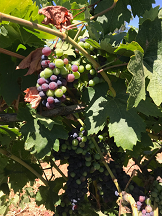 Zinderella going through verasion
Zinderella going through verasion
Our grower Paul has a quick update for us regarding the Zinderella grapes, “As you can see veraison has already happened, and now the berries are ripening and coloring nicely. This year’s 2018 wine grape crop is shaping up nicely for us! Overall fruit sets are slightly lighter than last year, but as we know, with lighter crop sets, it increase expectations of enhanced flavors and better total quality.”
Give us a call at 877-812-1137 or shoot us an email at sales@juicegrape.com to set up your order for the fall!







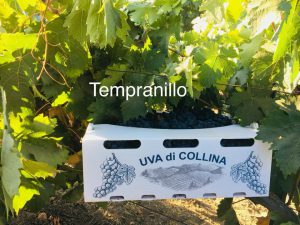
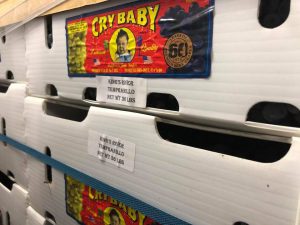
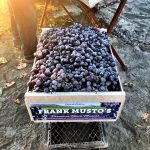
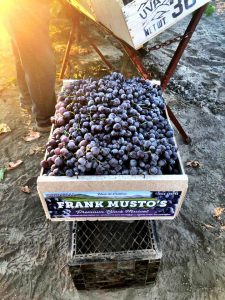
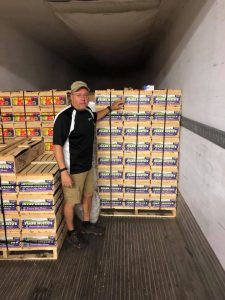
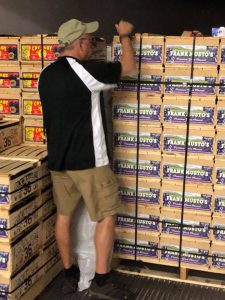
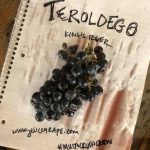
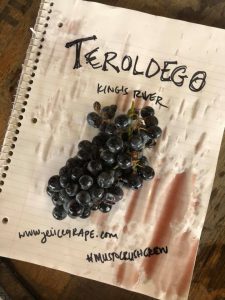
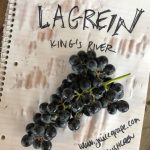
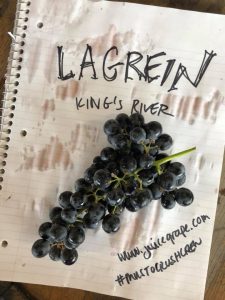
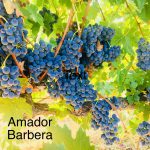
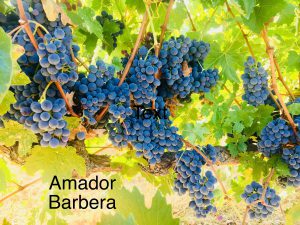
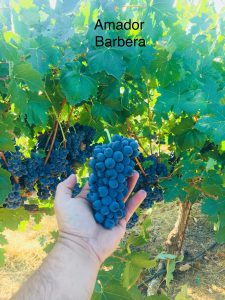
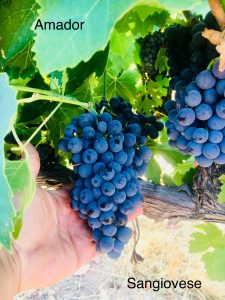
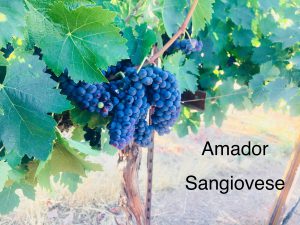
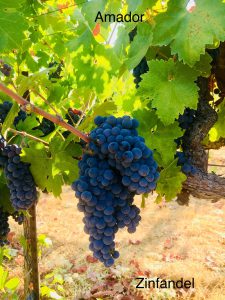
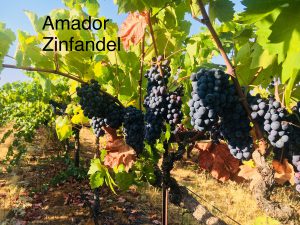
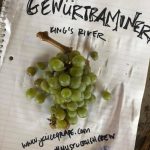
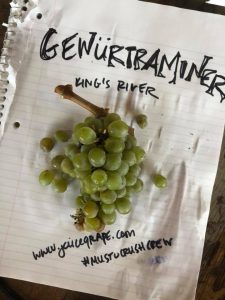
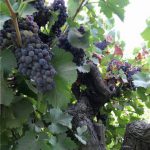
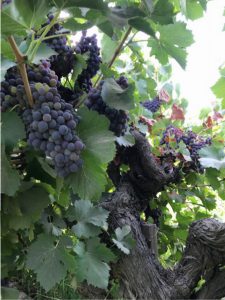
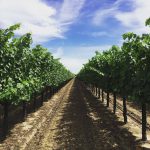
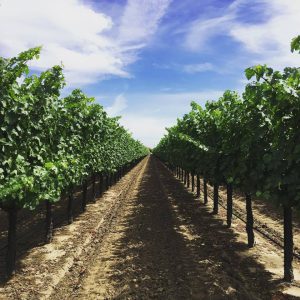

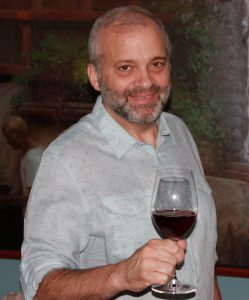
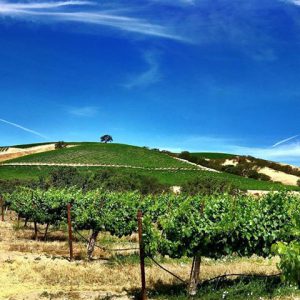
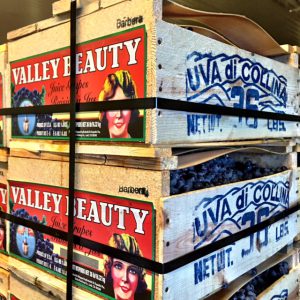
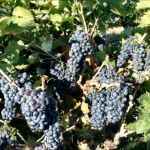
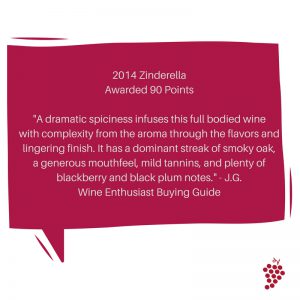
Recent Comments